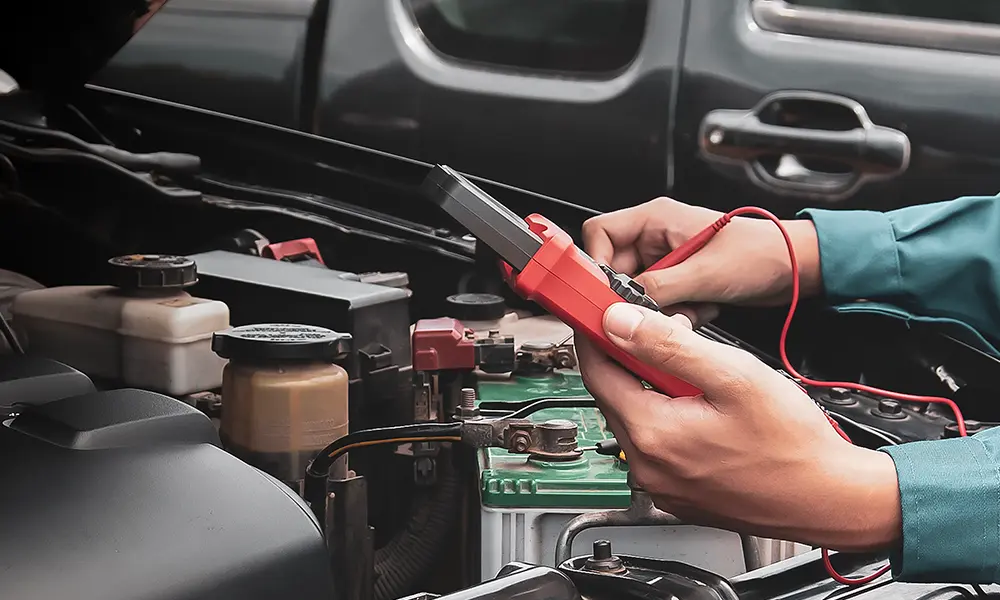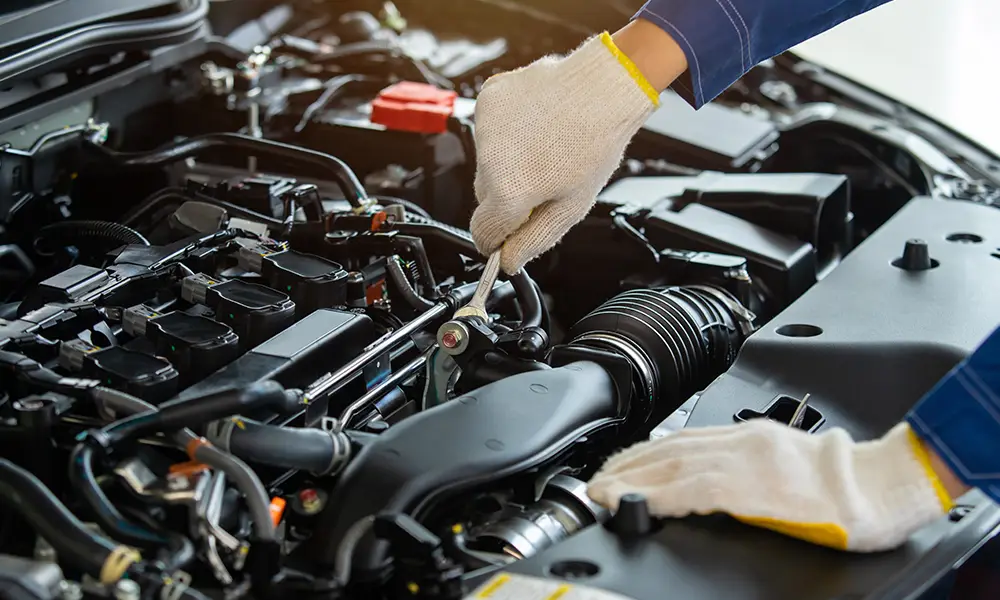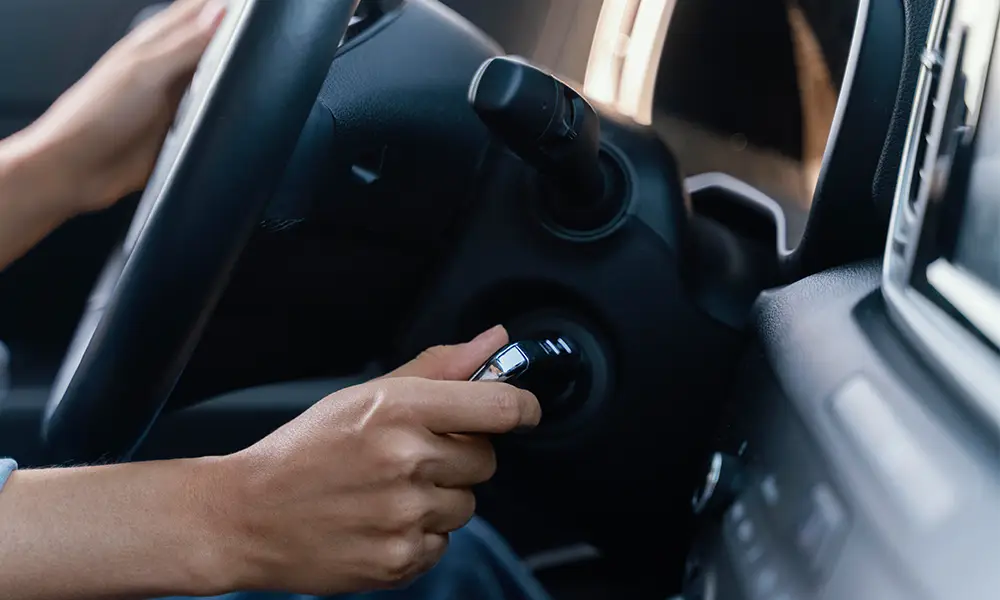Imagine turning the key and hearing only silence. Your lights flicker, and your car won’t start. The culprit could be your alternator, but how do you know for sure?
If you’ve ever asked yourself: How do you test a car alternator at home, this guide is for you.
We’ll walk through easy methods to check alternator health, show warning signs, and explain when to call a professional.
Why the Alternator Matters
The alternator powers your vehicle’s electrical systems and recharges the battery while you drive.
When it fails, your battery drains, lights dim, and essential electronics stop working. Left unchecked, a bad alternator could leave you stranded.
How Do You Test a Car Alternator?
Testing an alternator doesn’t require advanced tools. You can use simple methods at home with just a voltmeter or by observing performance signs.
Understanding these steps helps you decide whether the alternator or battery is to blame.
Tools You’ll Need for Testing
Before you start, gather a few essentials:
- Digital multimeter or voltmeter.
- Safety gloves and glasses.
- A clean, stable parking area with the engine off.
These tools allow accurate testing without risk of injury.
Step 1: Perform a Visual Inspection
Check for obvious signs of alternator trouble. Look for:
- Loose or frayed belts.
- Burnt smells from the alternator.
- Unusual noises like grinding or whining.
These early indicators can point to mechanical failure.
Step 2: Test Battery Voltage with Engine Off
Set your multimeter to DC volts and connect it to the battery terminals.
A healthy battery should read around 12.6 volts when the engine is off. Anything significantly lower may indicate a weak battery, not necessarily a bad alternator.
Step 3: Test Voltage with Engine Running
Start the car and measure again. A working alternator should raise the voltage to 13.8–14.8 volts.
If the voltage stays low or fluctuates, your alternator isn’t charging properly.
Step 4: Load Test with Accessories On
Switch on the headlights, radio, and air conditioning. Voltage should remain stable above 13 volts.
If it drops sharply, the alternator may not handle extra electrical demand.
Step 5: The Headlight Brightness Test
A simple check without tools: turn on your headlights, then rev the engine slightly.
If brightness increases, your alternator is charging. If lights stay dim or flicker, it’s a red flag.
Common Signs of Alternator Failure
If you notice any of these issues, testing is essential:
- Dashboard warning light shaped like a battery.
- Frequent jump-starts required.
- Dim or flickering headlights.
- Strange burning smells.
- Whining or grinding noises from under the bonnet.
These symptoms often appear before total failure.
How Long Does Alternator Testing Take?
Most DIY tests take less than 15 minutes.
Professional workshops may perform more advanced diagnostics, but even then, testing rarely takes more than an hour.
DIY vs Professional Testing
DIY tests are great for quick checks, but professional mechanics use advanced diagnostic tools for accuracy.
If results are unclear or your alternator is integrated with modern electronics, book a workshop inspection.
How Much Does Alternator Testing Cost?
At home, testing is free with a multimeter.
At a workshop, diagnostic checks typically cost between $50 and $100, often waived if repairs are required.
Can You Drive with a Failing Alternator?
Technically, yes, but only for a short time. Once the battery drains, your car will shut down.
Driving with a weak alternator risks total breakdown and expensive repairs.
How Often Should You Test Your Alternator?
Check your alternator whenever you service your battery or notice unusual electrical issues.
As a rule, testing once a year keeps you ahead of potential failures.
Brisbane Experts in Alternator Testing and Repairs
So, how do you test a car alternator at home? Start with a visual check, measure voltage with a multimeter, and look for performance under load. These simple steps reveal whether your alternator is working or failing.
At Car One, we know how critical a reliable alternator is for Brisbane drivers. We offer expert electrical diagnostics and repairs that keep your car safe and dependable.
Call us today on (07) 3607 0215 to book alternator testing with Car One, Brisbane’s trusted automotive specialists.
FAQs
1. How do you test a car alternator without a multimeter?
You can try the headlight brightness test, but a multimeter provides more accurate results.
2. What voltage should a good alternator show?
Between 13.8 and 14.8 volts when the engine is running.
3. Can a bad alternator drain the battery?
Yes, a faulty alternator fails to recharge the battery, leaving it drained.
4. How do I know if it’s the battery or the alternator?
If the battery reads low even when charged, the alternator is likely at fault.
5. Is alternator replacement expensive?
Replacement costs vary between $400 and $1,200, depending on vehicle make and model.




